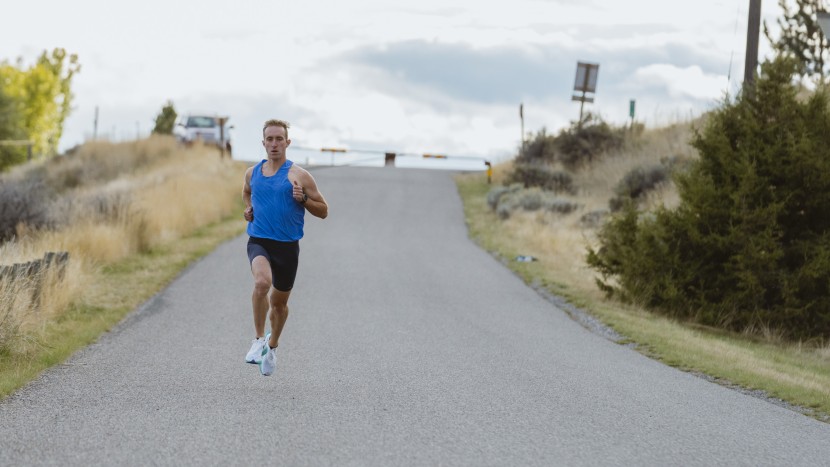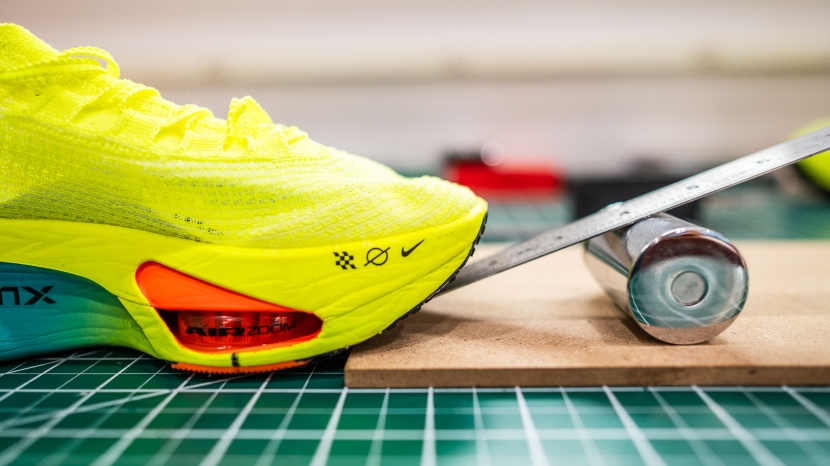To make your shoe decision-making easier, we have information to help you find the perfect pair of running shoes, in addition to our detailed review. For our comparisons, we tested the men's running shoe competition through the streets of Helena, Montana. Each shoe was put through a comprehensive set of runs that started with a standardized 6-mile loop over a range of terrain, including loose gravel, hard-packed dirt, asphalt, concrete, and grass. Then, each shoe completed a barrage of other tests, including (but not limited to):
- A 6-10 mile threshold workout
- A long run lasting 90-120 minutes
- A short recovery run
- 3k-5K paced work
- Mile paced strides, 2-3 sets
We strive to assess the different shoes fairly by testing them multiple times under many conditions. Every pair of shoes was given adequate time underfoot, and most went through significantly more miles than required. We also send a second pair of each shoe to our testing warehouse, collecting hard measurements such as heel-toe-drop, dimensions, and toe box volume.
Cushioning
We created our standardized test loop, which features various terrains and gradients, to better compare cushioning. We took each shoe on a run around the loop and noted what we liked and didn't like about the cushioning. We then took each shoe on a long run to see how well the cushioning reduced perceived fatigue. Similarly, each shoe was assessed over a shorter recovery run to see how the cushioning felt at slower paces. During our faster threshold and interval sessions, we noted how the cushioning felt at pace. Taking notes on fatigue, discomfort, and perceived impact helped us narrow down which cushioning we liked the best. Back in the lab, we measured stack height in each shoe's heel and toe so we could report on the amount of underfoot cushioning present.
Upper Comfort
Upper comfort was evaluated by wearing each shoe in a wide range of sessions, comparing all of the run types, and noting which upper worked best with our foot. We wore socks of different thicknesses and ran in varying weather conditions to experience. We analyzed the roominess of the toe box and the snug fit of the heel cup, looking for hot spots or blisters. We evaluate the fabric's breathability and pay close attention to pressure points.
Stability
One of the main reasons we wanted to make sure our test loop had different surfaces was to check for lateral stability and support. This allows us to analyze how the different heel drops and stack heights impact stability. We noted how the stability transferred into our ankles and knees. In-house, we measured the width of the shoes to see if there was a correlation between width and stability.
Responsiveness
Our assessment of responsiveness took place over a variety of runs. We performed a threshold session of 6-10 miles for each shoe and noted how we liked the responsiveness. Similarly, we assessed the ability to hit faster paces during sessions at 3k-5k pace, strides at mile pace or faster, and alactic sprints. We considered objective measures of pace and subjective measures of feel and completed side-by-side testing to see which had the fastest feel and produced the most rebound for our energy input.
Also included in our assessment of responsiveness are our in-house measurements of the rocker angle and the rocker apex location, features that contribute to that “rolling” feeling some shoes have that seem to push you forward. We locate the precise position where the toe of a shoe begins to turn upward off the ground and use a ruler and weight to find the angle at which the shoe begins to lift. We also note the plate material, if there is one, and the foam type used in the midsole.
Weight
All weight comparisons were completed during our in-house testing. We weighed each shoe right out of the box on the same scale. The weight score is based strictly on the data collected in-house and provides an objective measurement for comparison. However, when running in each shoe, we notice some of themfeel lighter underfoot, potentially due to fit and other design choices.
Traction
We tested the traction of every pair of shoes while running across surfaces most road-based runners are likely to encounter. We ran on wet asphalt and cracked cement, around damp tracks, and across gravel driveways. We noted which ones require changing strides to keep from slipping, and which take away all worries and let you sail.






